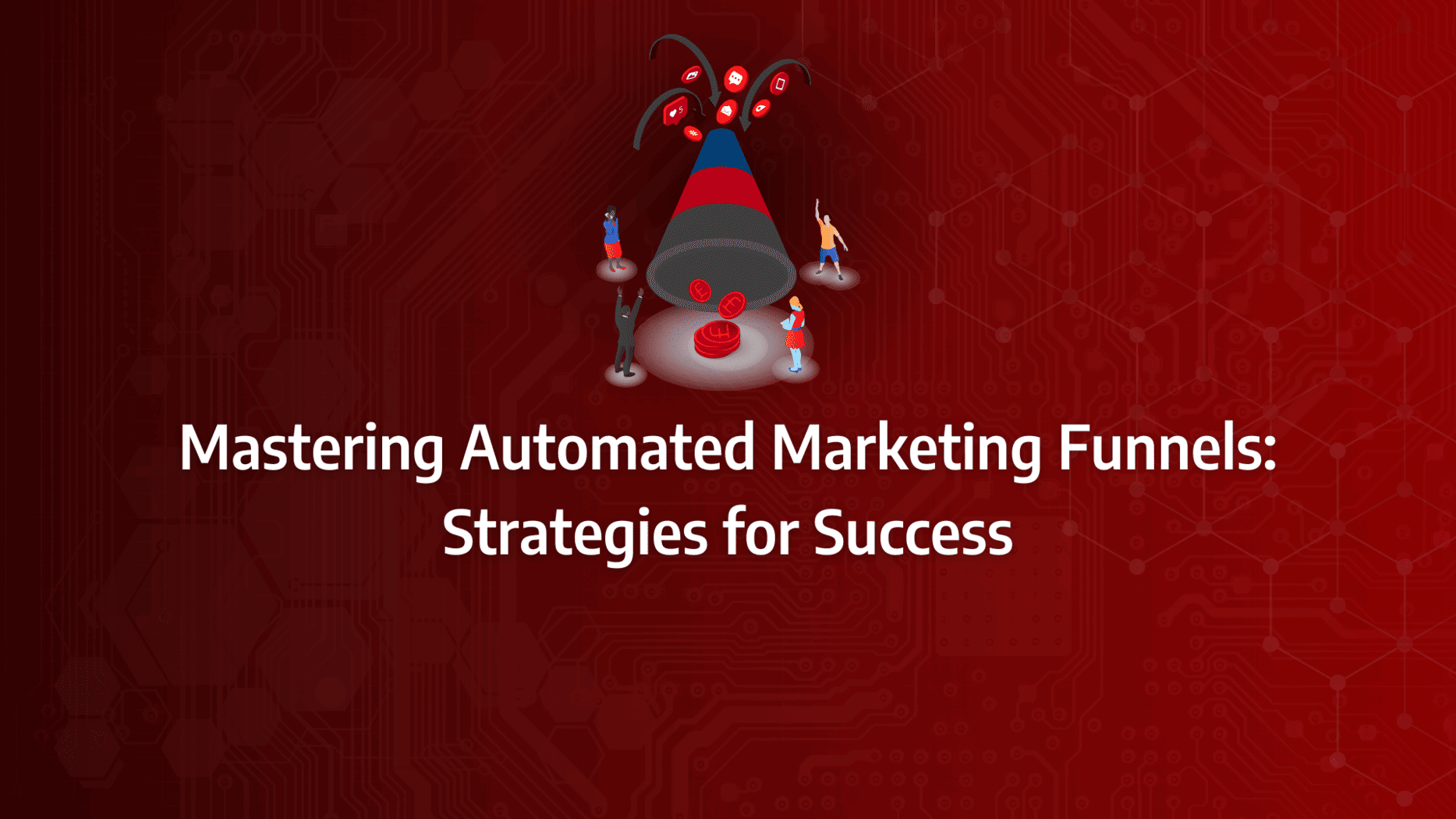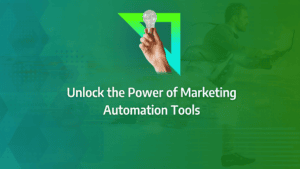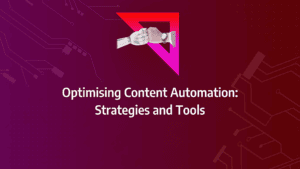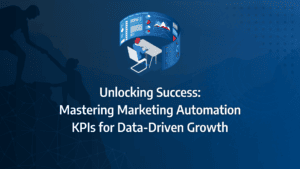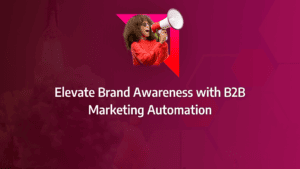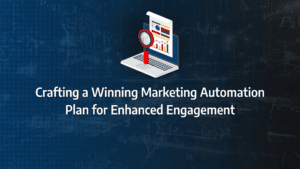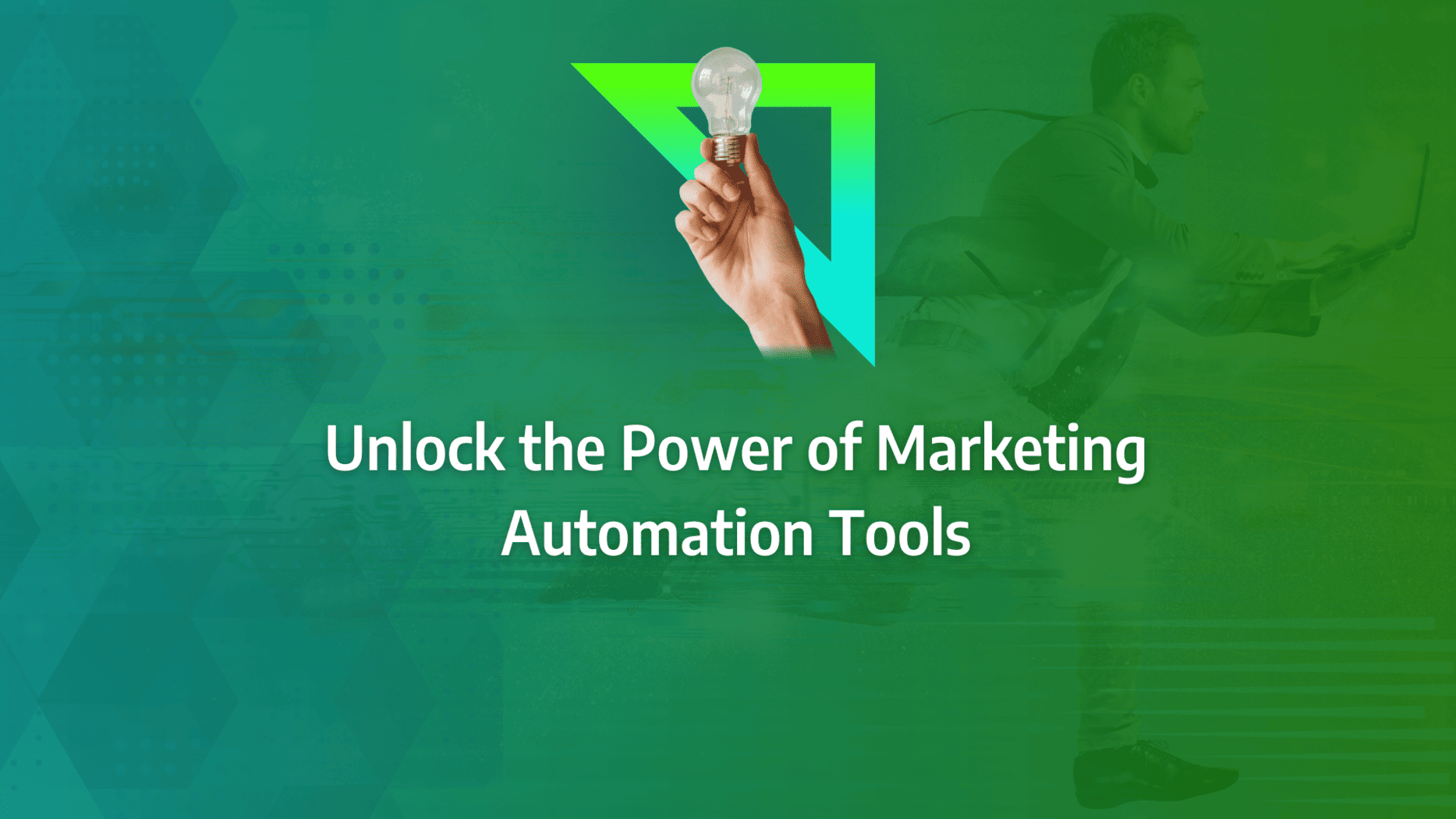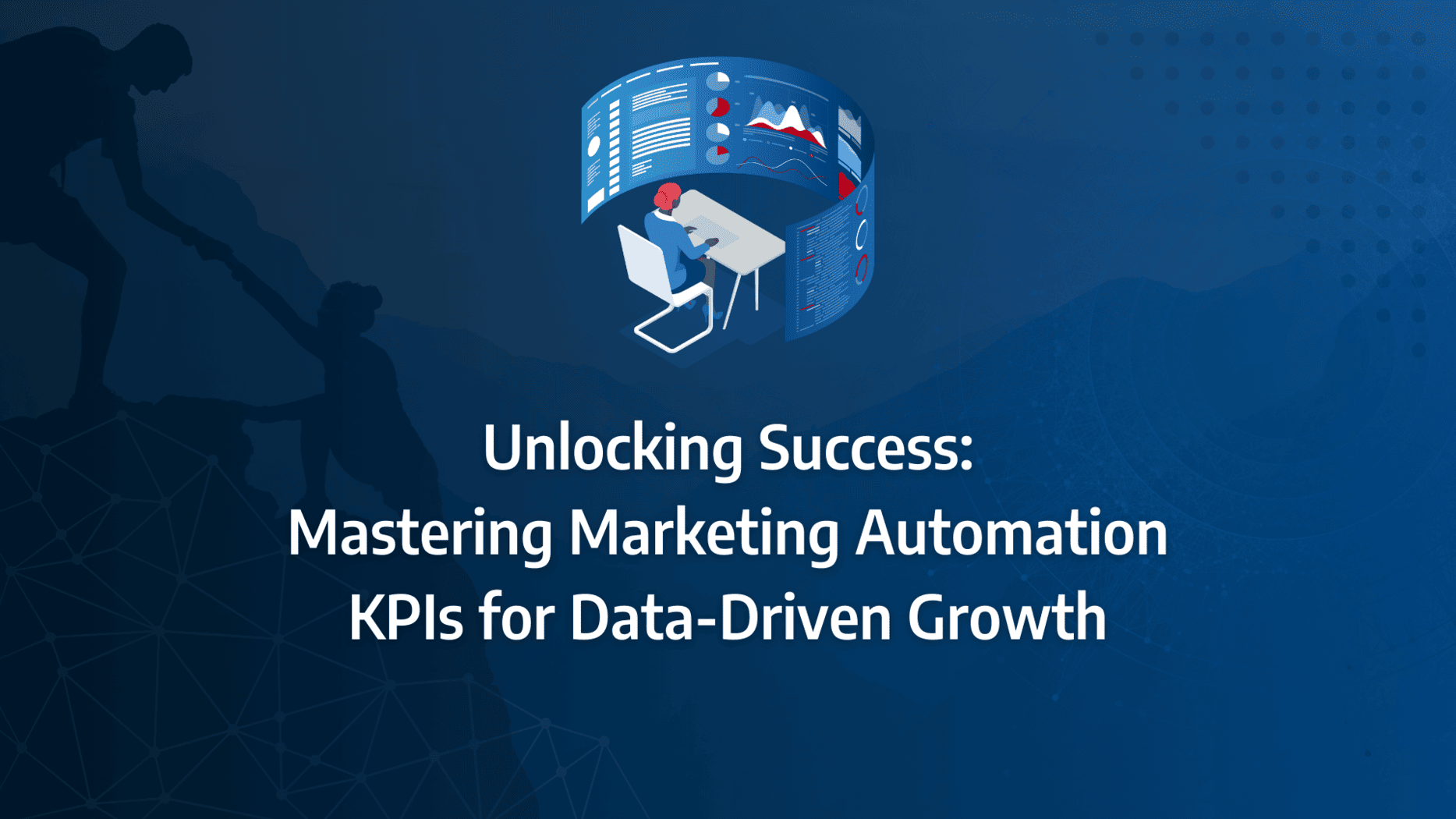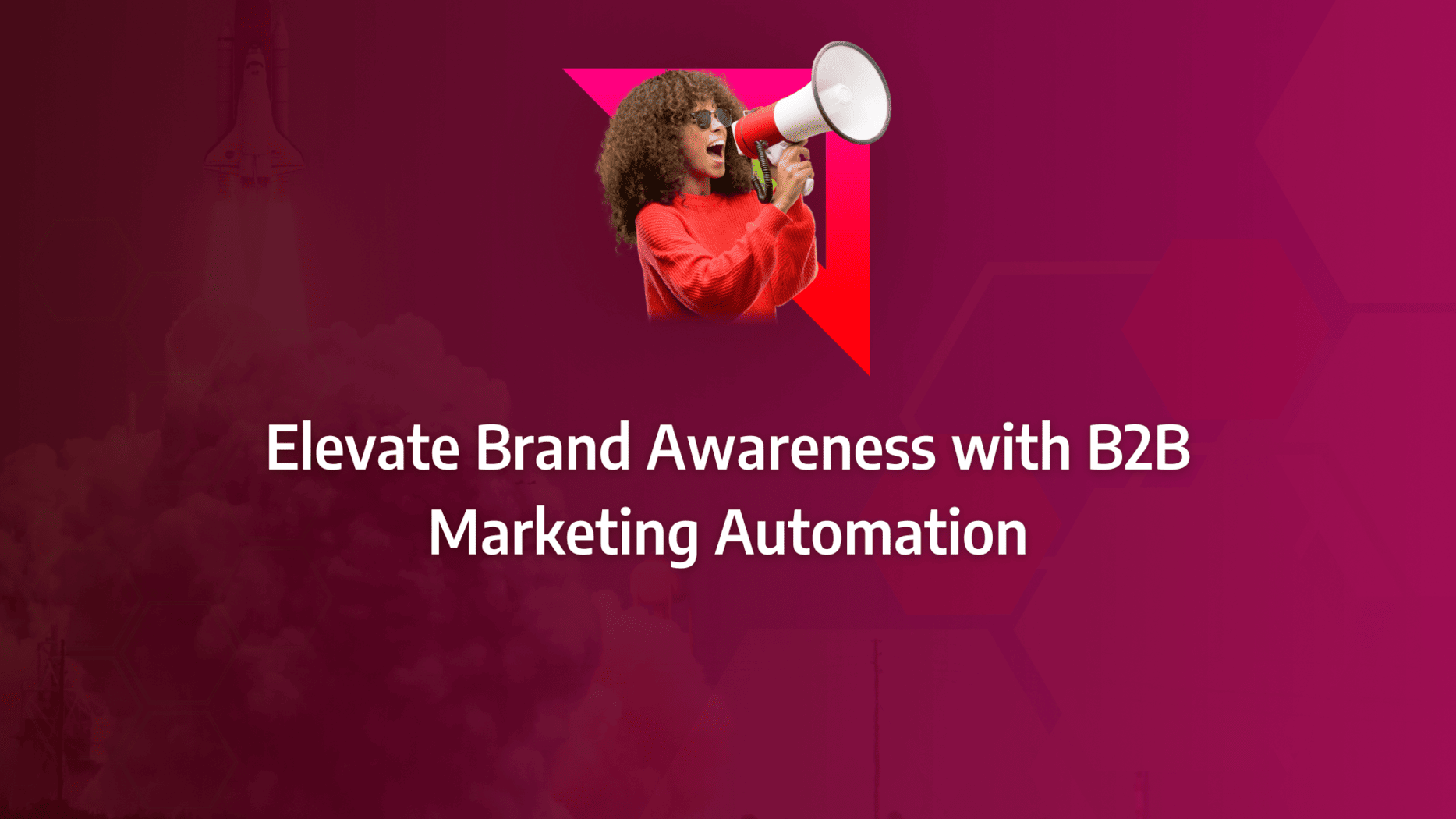Are you tired of the constant struggle to scale your marketing efforts without compromising quality? The reality is, manually managing your marketing funnels can be a daunting task, often leading to inefficiencies and missed opportunities. Imagine a scenario where your marketing funnels run seamlessly, guiding prospects through each stage with precision and consistency—without requiring you to lift a finger. In this guide, we’ll dive into the transformative power of marketing funnel automation.
You’ll discover how automating your funnels can not only streamline your processes but also enhance customer engagement and drive conversions. We’ll walk you through the key components of automated funnels and provide actionable steps to implement this strategy effectively.
- Marketing funnel automation can significantly enhance efficiency by streamlining lead generation, nurturing, and conversion processes, allowing your team to focus on strategic tasks.
- Implementing automated funnels involves selecting the right tools, setting up workflows, and integrating with CRM systems to ensure seamless operations.
- Personalisation remains crucial even in automated funnels; the key is to balance automation with tailored messaging to maintain a personal connection with your audience.
- Continuous testing and performance monitoring are essential for optimising automated funnels, ensuring they deliver the best possible results.
- Future trends in funnel automation include the increasing use of AI and machine learning, which will further enhance the ability to predict customer behaviour and personalise marketing efforts.
What is a Marketing Funnel and How Does it Work?
A marketing funnel serves as a vital framework that visually illustrates the journey leads undergo as they are converted into customers, viewed through both marketing and sales lenses. Envision this funnel as a tool where marketers cast a wide net to capture a broad audience of potential leads. These leads are then systematically nurtured, guiding them through the decision-making process, with each stage of the funnel narrowing down the pool until only the most qualified prospects remain.
The Stages of the Marketing Funnel
Awareness:
The journey begins at the Awareness stage, positioned at the widest part of the marketing funnel. Here, potential customers first encounter your brand through a variety of marketing campaigns and consumer research activities. This stage is crucial for establishing trust and building thought leadership. Tactics such as events, advertising, trade shows, content marketing (including blog posts and infographics), webinars, direct mail, viral campaigns, social media, search engine optimisation, and media mentions are all instrumental in generating awareness. During this stage, lead generation occurs as key information is collected, and these leads are subsequently entered into a lead management system for further nurturing within the marketing funnel automation process.
Interest:
As leads progress to the Interest stage, they begin to explore your company, its products, and the valuable insights you offer. This stage is pivotal for cultivating relationships with the individuals in your lead database, allowing you to introduce your brand’s unique positioning. Marketing automation funnels play a significant role here, enabling you to nurture these leads through targeted email campaigns, industry-specific content, online classes, newsletters, and other tailored materials that align with their interests.
Consideration:
When leads advance to the Consideration stage, they evolve into marketing qualified leads (MQLs) and are recognised as serious prospects. At this point, marketers can leverage automated marketing funnels to deliver more detailed information about products and offers. This might include automated email campaigns that continue to nurture leads with targeted content, case studies, free trials, and other resources designed to address specific needs and concerns.
Intent:
The Intent stage is where prospects exhibit a clear interest in purchasing a product. Actions such as completing surveys, participating in product demos, or adding items to an online shopping cart indicate a strong buying intent. This stage is critical for marketers using an automated marketing funnel to present a compelling case for why their product is the optimal choice, leveraging every interaction to reinforce the value proposition.
Evaluation:
During the Evaluation stage, buyers make their final decision on whether to purchase your product or service. This stage often involves close collaboration between marketing and sales teams, who work together to guide the buyer through the decision-making process. Here, the marketing automation funnel can be particularly effective in providing personalised content and reassurance, ensuring that the prospect is fully convinced of your product’s superiority.
Purchase:
Finally, the journey culminates in the Purchase stage, where the prospect makes the decision to buy, transitioning into a customer. This is the point where the sales team finalises the transaction. A seamless and positive experience at this stage not only secures the sale but also has the potential to generate referrals, feeding back into the top of the funnel and perpetuating the cycle within the automated marketing funnel.
What Matters Most?
Integrating your technology stack is essential for enhancing automation efficiency, as seamless connections between tools can streamline processes significantly. Mapping customer journeys before implementing automation is crucial for creating effective funnels tailored to your audience’s needs. Moreover, prioritising user experience throughout the funnel ensures higher customer satisfaction and retention, ultimately leading to improved business outcomes.Get In Touch
How Does an Automated Sales Funnel Work?
The traditional marketing funnel is frequently portrayed as a linear progression—beginning at the top where prospects are introduced to your brand and culminating at the bottom where they convert into customers. However, in reality, marketing funnel automation rarely adheres to this simplistic pathway. Prospects might enter the funnel at various stages, move back and forth, or even exit entirely, depending on their unique purchasing behaviours. This complexity underscores the importance of understanding each stage of the marketing automation funnel and how these stages interact within the broader customer journey, from initial awareness through to final conversion.
Top of the Funnel: Awareness
The top of the funnel (TOFU) represents the stage where prospects first encounter your brand and begin to engage with it. At this juncture, they may have limited knowledge of your products or services, making brand awareness a critical focus. Effective marketing funnel automation strategies at this stage involve generating interest through targeted content and marketing efforts.
Strategies to Attract Prospects:
- Create a Landing Page or Infographic: Introduce your brand, product, or service to new visitors with visually engaging and concise content. These elements should clearly convey your brand’s value proposition while encouraging further interaction.
- Social Media Posts: Leverage your unique selling proposition (USP) to capture interest and drive engagement across social media platforms. Posts should be tailored to resonate with your target audience, encouraging them to learn more about your offerings.
- Paid Ads: Utilise targeted ads on social media platforms, podcasts, and other channels relevant to your audience to increase visibility. These ads should be designed to maximise reach and attract potential leads into your marketing funnel.
By deploying these strategies within your marketing funnel automation, you can effectively capture the attention of potential leads, setting the stage for deeper engagement.
Middle of the Funnel: Consideration
Once prospects have meaningfully engaged with your brand, they transition into the middle of the funnel (MOFU). This stage is crucial for building trust and establishing your brand’s differentiation in the marketplace. The goal here is to nurture leads, guiding them further along the funnel by providing valuable and targeted content that addresses their specific needs.
Strategies to Engage Prospects:
- Write an Article or White Paper: Offer content that directly addresses the questions and challenges faced by your potential customers. This material should position your brand as a thought leader, providing solutions that meet their specific needs.
- Conduct Surveys: Gain deeper insights into your audience’s challenges and preferences. This data allows you to tailor your approach, ensuring that the content and strategies you deploy are highly relevant.
- Share Case Studies and Comparisons: Highlight real-world examples that showcase how your product or service excels compared to competitors. Case studies provide tangible evidence of your brand’s effectiveness, helping to build trust with your audience.
- Create Segment-Specific Landing Pages: Develop content that speaks directly to the specific needs and interests of different customer segments. These landing pages should be optimised to engage prospects at various stages of the funnel, addressing their unique concerns and guiding them towards conversion.
By integrating these tactics into your automated marketing funnel, you can nurture leads more effectively, building stronger relationships that pave the way for eventual conversion.
Source: Findstack
Bottom of the Funnel: Conversion
As prospects approach the bottom of the funnel (BOFU), they are typically on the brink of making a purchase decision. At this stage, your objective is to provide compelling reasons for them to choose your brand over others. The marketing automation funnel should be designed to facilitate this decision-making process, offering clear and persuasive content that removes any remaining barriers to conversion.
Strategies to Convert Prospects:
- Offer Trials or Demos: Allow potential customers to experience your product or service first-hand. This direct exposure can be instrumental in convincing them of the value your offerings provide.
- Create How-To Guides: Address common doubts and potential blockers by providing clear, practical instructions. These guides should empower prospects to overcome any hesitation and move forward with their purchase.
- Share Social Proof: Build trust by sharing customer reviews and testimonials. Prospective buyers are often swayed by the experiences of others, making social proof a powerful tool at this stage.
- Provide Comparison Charts: Make it easy for prospects to compare your product or service against competitors. These charts should clearly highlight the benefits and value you offer, positioning your brand as the superior choice.
- Segmented Email Campaigns and Surveys: Target specific behaviours, such as abandoned shopping carts, with personalised follow-up emails and on-site surveys. These targeted communications can help to re-engage prospects, addressing any lingering doubts and encouraging them to complete their purchase.
Building Your Automated Sales Funnel
Why Should You Create Automated Sales Funnels?
Accelerating your business’s growth necessitates a strategic allocation of time and resources, and one of the most impactful methods to achieve this is through the implementation of marketing funnel automation. An automated marketing funnel not only streamlines your sales processes but also enables you to drive higher sales with minimal manual input, allowing your focus to remain on growth and innovation.
However, the advantages of creating automated marketing funnels go well beyond mere time savings. Let’s delve into some of the key benefits:
Minimise Expenses and Labour Costs:
One of the often-overlooked benefits of marketing automation funnels is the significant reduction in both expenses and labour costs. By automating repetitive and time-consuming tasks, you can optimise the allocation of your resources, thereby improving your return on investment (ROI). This increased efficiency directly contributes to a higher profit margin, which is crucial for sustainable business growth over the long term.
Improve Data Points:
Automating your sales funnel affords you more time to focus on analysing your sales and marketing data. This deeper analysis is critical for identifying areas that require improvement. By pinpointing the weak points within your automated marketing funnel, you can make targeted adjustments that enhance its overall performance and effectiveness, ensuring that your funnel operates at its highest potential.
Find Better Leads and Increase Conversions:
A well-optimised marketing automation funnel does more than just attract more leads; it ensures that these leads are of higher quality, ultimately increasing your conversion rate. By nurturing leads through a structured, automated process, you can foster stronger relationships with prospects. This approach not only builds trust but also guides them more efficiently towards making a purchase decision, thereby enhancing the overall effectiveness of your sales strategy.
How Do You Create an Automated Sales Funnel?
Creating an automated sales funnel requires a strategic investment of time and effort upfront, but the streamlined efficiency and long-term benefits make it an invaluable process. Below are the critical steps to follow when designing an automated campaign that is both simple and effective, ensuring maximum results.
Conduct Market Research
The foundation of a successful marketing automation funnel is a deep understanding of your audience. Start by engaging with your current customers, top-performing sales teams, and key stakeholders to gather insights into your audience’s needs, motivations, and behaviours. Developing detailed buyer personas based on specific needs, demographic data, common pain points, and frequently asked questions can significantly enhance your marketing strategy.
However, your research shouldn’t end with your audience. Conduct a thorough competitive analysis to understand how other businesses in your industry position themselves. Examine their products, pricing strategies, and brand voice to identify opportunities for differentiation. Highlighting these unique qualities in your content will help your brand stand out in a crowded market.
Select the Right Automation Software
A robust Customer Relationship Management (CRM) system is essential for the effective automation of your sales funnel. More than just a database, a good CRM tracks lead behaviours, monitors engagement levels, and segments users based on similar characteristics. Pairing your CRM with a marketing automation tool allows you to build and manage automated marketing funnels efficiently. These tools enable you to send a series of automated messages, typically via email, to users within your database, nurturing them through the funnel stages.
Selecting the right CRM and marketing automation software also provides you with powerful reporting capabilities, allowing you to monitor progress towards goals, gain deeper insights into lead behaviours, and continuously refine and improve each campaign.
Develop a Content Strategy
An effective marketing automation funnel hinges on delivering highly relevant, valuable content that resonates with your audience. Develop a content strategy that supports each stage of the funnel, from awareness to conversion. This strategy should include a variety of content types such as blogs, videos, and emails that directly address the questions and pain points of your audience.
Your content should be evergreen, maintaining relevance and value over time to ensure that prospects do not become fatigued by repeated messages. A well-executed content strategy within an automated funnel will guide visitors through your website, encouraging them to engage with more content and learn about your offerings. The primary objective is to meet their needs and help them progress smoothly along the path to purchase.
Create a Tempting Lead Generation Magnet
To effectively automate your campaign, you need compelling anchor content that motivates users to opt into your automated funnel. Gated content, which requires users to provide their contact information in exchange for valuable insights, is particularly effective. It’s essential that this content is enticing enough to persuade users to share their details, thereby entering your funnel.
Popular forms of lead generation magnets include downloadable premium content such as eBooks, buyer’s guides, or whitepapers. Alternatively, consider creating scripted videos that provide in-depth solutions to specific challenges faced by your audience. This approach ensures that your lead generation magnet not only attracts prospects but also aligns with the overall strategy of your automated marketing funnel.
Source: Salesforce
Build a Campaign
After developing compelling anchor content designed to capture leads, the next step is to construct a cohesive and effective automated campaign. With a comprehensive content strategy that addresses specific user needs and pain points across each stage of the funnel, it’s time to integrate these elements. The goal is to create a seamless flow that anticipates the needs and emotions of your audience, ultimately leading to a powerful call to action (CTA).
Crafting Your Call to Action
Your CTA is not always about prompting an immediate purchase. Equally effective CTAs might involve scheduling a conversation, requesting a demo, or comparing solutions. The nature of your CTA should align with the characteristics of your business and industry.
For products that are high-value or require significant consideration, your automated marketing funnel may be most effective in steering leads towards a direct sales call. The best approach should be determined by understanding your target audience and their decision-making process.
Time-Based and Behaviour-Based Automation
When setting up your marketing automation funnel, you have the option to choose between time-based automation and behaviour-based automation. If you opt for a time-based funnel automation or an email drip campaign, ensure that each message in the sequence logically builds upon the last, leading smoothly to the final CTA.
For a more advanced approach, behaviour-based automation with branching logic can create personalised user journeys based on individual actions. This method places a CTA at the end of each branch, guiding users towards conversion at a pace and direction that matches their engagement level.
Consider the user’s engagement level:
- Cold Leads: If a lead shows little to no engagement with your messages, categorise them as “cold” and assign them to a segment that receives fewer, more targeted messages over time.
- Engaged Leads: If a lead interacts with multiple messages early in their journey, accelerate their progression towards the final CTA, ensuring that their interest is capitalised on promptly.
Accounting for User Behaviour
One of the most common frustrations for potential customers is receiving irrelevant sales emails from a brand they are barely familiar with. By leveraging an advanced marketing automation funnel, you can design user journeys that dynamically adapt based on their actions, ensuring a personalised and relevant experience for each prospect.
Set the Wheels in Motion
With your campaign mapped out, it’s time to bring it to life. Publish your content, activate your automated marketing funnel, and begin generating leads. It’s important to remember that effective lead generation doesn’t happen in isolation—it often requires significant and sustained marketing effort. To maximise the impact of your automated sales funnel, promote your lead generation content through various inbound marketing channels, such as YouTube and blogs.
Our Tactical Recommendations
From our experience, focusing on multi-channel engagement is key, as it allows you to reach customers across various platforms, thereby strengthening your funnel. Clients often find that using behavioural triggers in their automation greatly improves relevance by responding effectively to user actions. Additionally, segmenting your audience for personalised messaging typically results in better engagement and conversion rates, making automated campaigns more effective.Get In Touch
Improving Sales Funnel Conversions Using Marketing Automation
10 Key Strategies to Enhance Sales Funnel Conversion with Marketing Automation
Harnessing a top-tier marketing automation platform can dramatically improve the effectiveness and efficiency of guiding prospects through your marketing and sales funnel. Below are ten essential strategies that can elevate your marketing automation funnel, driving stronger conversions and optimising your sales processes.
- Triggered Actions:
Leverage marketing funnel automation to initiate actions, such as sending targeted emails, whenever a lead exhibits a change in buying interest. Being responsive to these changes in real-time can often be the critical factor between securing or losing a deal. Marketing automation alerts enable your team to act swiftly, maintaining engagement at crucial moments. - Lead Forms and Progressive Profiling:
Implement lead forms to build detailed profiles of your prospects, enabling more precise qualification. Progressive profiling within these forms allows you to gradually collect comprehensive data on your leads. By deploying a single web form across your site and landing pages, you can progressively develop a detailed understanding of each prospect, helping you address their most pressing challenges more effectively. - Website Behaviour Analysis:
Analyse the behaviour of visitors on your website to gain valuable insights into their interests, intentions, and current buying status. Understanding which pages your prospects interact with reveals the specific problems they are trying to solve, guiding the type of content you should provide and the questions to ask. This approach increases your chances of closing deals by aligning your offerings with their needs. - Advanced Email Nurturing Campaigns:
Execute sophisticated email nurturing campaigns that keep your brand top-of-mind while guiding prospects through the stages of your marketing automation funnel. Use your marketing automation platform to continually educate your prospects, positioning your brand as a valuable resource when key purchasing decisions are made. - Personalised Content:
Tailor your content to create a more interactive, one-to-one experience that fosters recognition and trust. Personalised interactions make prospects feel understood and valued, which builds credibility and enhances trust when they are ready to make a purchase. This personalised approach is key to deepening relationships and driving conversions. - Dynamic Content:
Utilise dynamic content to maximise engagement with your website and other digital assets. Avoid showing the same content repeatedly—especially if a prospect has already consumed it. Instead, update content offers based on your prospects’ specific interests and where they are in the sales cycle. This strategy enhances the user experience and keeps your content fresh and relevant. - Campaign and Content Effectiveness Analysis:
Regularly analyse the performance of your campaigns and content to identify what best facilitates the movement of prospects through the funnel. By integrating the most engaging and deal-closing content into your nurturing programmes, you can accelerate the flow of leads through your marketing automation funnel, ensuring that your strategies remain effective and targeted. - Lead Scoring:
Implement lead scoring at each stage of the funnel to help your sales team prioritise their efforts efficiently. Given that time is a precious resource for sales teams, lead scoring systems allow your team to focus on the most promising leads, ensuring that their time is spent where it can have the most impact. - CRM Data Integration:
Integrate data from your marketing automation platform directly into your CRM to provide your sales staff with a clearer understanding of active prospects. This integration allows for more relevant and informed conversations, without requiring changes to existing pipeline management processes. The seamless flow of data between systems enhances the effectiveness of your sales efforts. - Integration with Other Technologies:
Enhance the operational effectiveness and efficiency of your sales funnel by integrating your marketing automation with other key marketing and sales technologies, such as GoToWebinar and Oktopost. These tools enable group presentations and provide valuable social intelligence, further boosting the performance of your marketing automation funnel.
